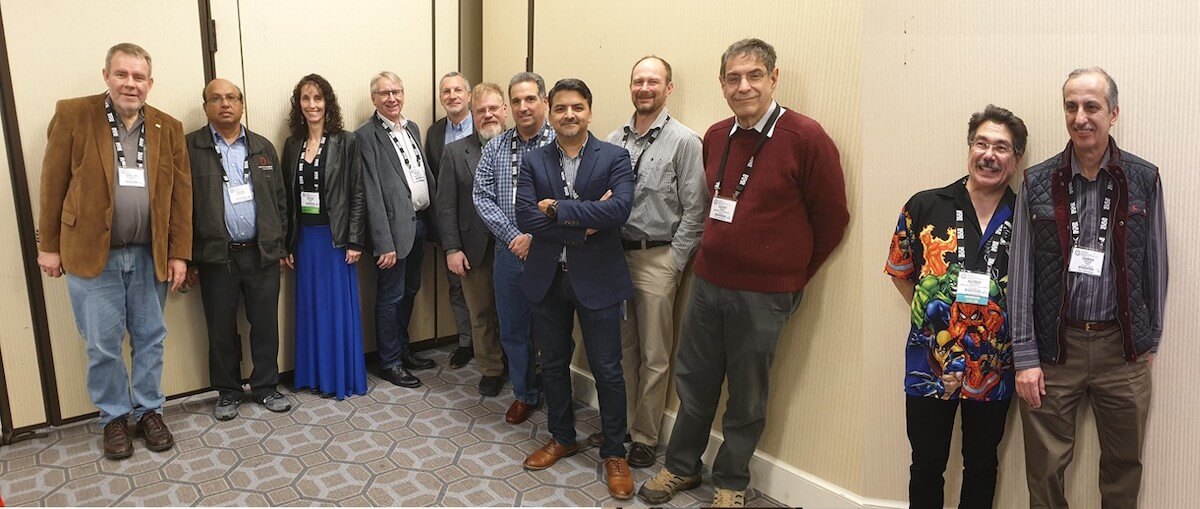
(Photo: Christie’s Photographic Solutions)
Developing an industry standard is no easy task, and for those involved, its acceptance and publication is something to be celebrated. On March 13, 2020, after eight long years, members of the IEEE 3D-DfT Working Group, from all various corners of the world, sent up a collective cheer to see the publication of the IEEE Std 1838™-2019 Standard for Test Access Architecture for Three-Dimensional Stacked Integrated Circuit (IEEE 1838, DfT for 3D IC).
While the technical details of the standard are important, I also wanted to tell the behind-the-scenes story. So I spoke with Erik Jan Marinissen, scientific director at imec, and Adam Cron, principal engineer in the Design Group at Synopsys, both champions of this effort since its very beginnings. I know for them and the other members of the IEEE 3D-DfT Working Group, this was a volunteer effort that required years of dedication to see it through to the end. As Marinissen noted, groups often met several times a week via WebEx meetings that for European participants like himself rolled past the dinner hour, into the evenings. So,
It Took a Village to Create IEEE Std 1838
I’ve known Marinissen for many years. He serves on the 3D InCites Advisory Board and is our 3D test guru. Last year, he contributed a status update on 3D test in his article, 3D Test, No Longer a Bottleneck!, in which he provides a summary of what was then still called “P1838”; Project 1838.
Marinissen spearheaded the 1838 effort through the IEEE in 2011 with his initial 3D IC DfT architecture developed for imec. He served as Chair, while Cron served as vice-chair. In 2016, the Working Group adopted new procedures and policies stipulating that any officer could serve only two-year terms in the same position. Consequently, the Working Group members voted for Marinissen and Cron to swap their chair and vice-chair positions. In hindsight, this was the ideal order of things.
“It made sense because while the chair oversees activities the vice-chair can argue points. This order made the best use of our abilities,” said Marinissen.
The number of people in the working group varied over time. Cron says they started out at 50 when 3D IC was being hyped and everyone thought it would take off. Then, as actual 3D product releases became anemic over the years, participation dwindled down to 15-20 members who were in it for the duration.
The core team, some pictured in the above photo, included (left to right) Marinissen; Tapan Chakraborty, consultant; Teresa McLaurin, ARM; Michael Wahl, University of Siegen; Cron; Jon Colburn, Nvidia; Mike Ricchetti, Synopsys; Sandeep K. Goel, TSMC; Jon Halderson, MicroChip; Harry Linzer, GlobalFoundries; Al Crouch, Amida; and Saman Adham, TSMC.
For the first three years, there was a lot of debate. For most Working Group members, die stacks were still in the future and there were lots of open-ended discussions taking place.
“I felt a bit like a shepherd herding his sheep,” said Marinissen. “As a research institute, imec was already making 3D test chips. I tried to leverage things I learned at imec to keep us focused, but we spent a long 2.5 years in debate.”
At a face-to-face meeting at the IEEE International Test Conference in 2013, the group formed three subgroups to work on different aspects of the architecture. People could join different teams that met every week and reported their progress back into the biweekly working group meeting. This accelerated things. In 2018, the standard was finalized, and the final approval process took up most of 2019, with three rounds of voting and revisions in between.
“The first round had 80% approval with lots of requests for editing for clarity, typos, and language,” said Cron. “By the second round, we had made monumental improvements and received 100% ballot approval.” The Standards Board approved IEEE Std 1838 on November 7th, which means it will bear the year of 2019. After final touches by a professional editor from IEEE the standard was officially released on March 13, 2020, and is now available here.
Hindsight is 2020
Were all the years and late nights worth it? “I’m not sure I would have started this if I’d known how long it would take,” admits Marinissen. “Maybe I would have had second thoughts. But looking back, I don’t regret it.”
Cron says he enjoyed the networking and interacting with smart people. “I think I am wise, and I tried to guide people in the direction I thought was right,” he said. “But I enjoyed the arguments and discussing different viewpoints. I feel a sense of satisfaction with its completion, even if it’s not used; but I think it will be used, it’s a good one. I get a lot of satisfaction knowing I helped it come to fruition.”
Marinissen noted that imec plays a central role in the semiconductor industry and participating in this project helped to forge the whole community. “We’ve had positive feedback from management and others at imec,” he said. “In the smaller subgroups, we did the heavy lifting and these people became friends for life. We recognize each other by our voices, just because we spent so much talking on the phone. That’s what I like about being part of the Standards Group.”
Interested in Joining the Fun?
While IEEE 1838 has completed now, IEEE has several test technology standards committee activities going on right now that you can join. Both Marinissen and Cron recommend participation to enhance your career path and stay relevant in the industry. To learn more, contact them at Erik.Jan.Marinissen@imec.be and Adam.Cron@synopsys.com.



















